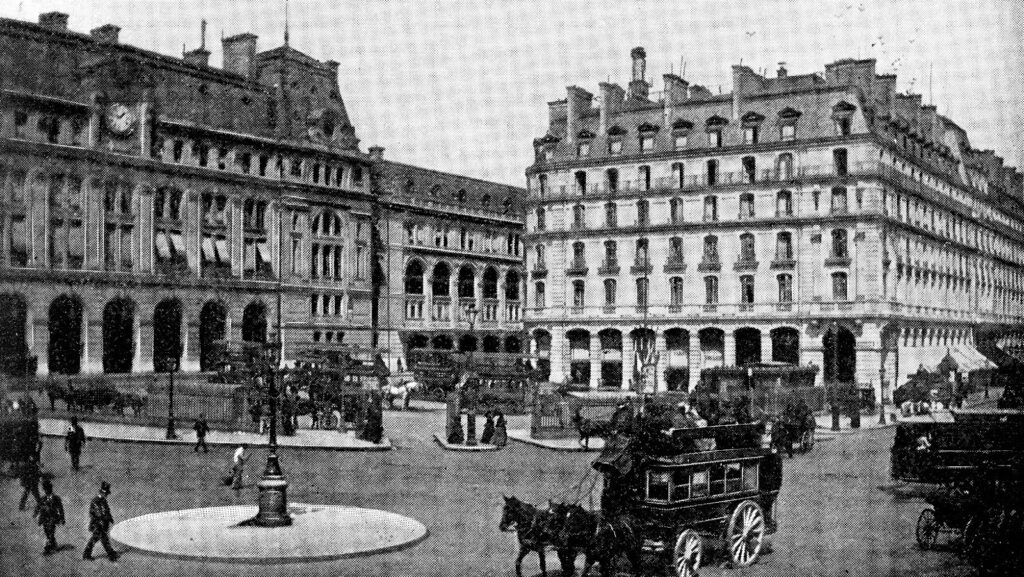

African Americans endured many hardships throughout the late 18th and early 19th centuries. From the fight against slavery to Jim Crow segregation, the African American experience was one of resilience and perseverance in the face of adversity.
This section of the essay will explore the various struggles and triumphs African Americans encountered during this period, providing an in-depth look into the Black voices of the day.
BLACK VOICES, 1780-1910
The African American experience in the late 18th and early 19th centuries was characterized by slavery and marginalization. Although African Americans were not represented in government institutions, they did manage to maintain some semblance of free, independent communities in various parts of the country. Despite the overt racism and greatly limited rights, new opportunities for education and economic advancement slowly began to open up.
During this period many Africans were brought to North America as slaves, but a small minority were also given their freedom. While most African Americans in this period lived under the highly oppressive constraints of slavery, there were a few who managed to find freedoms outside of what had been before them. They managed to gain employment at trades and crafts such as carpentry, blacksmithing, and seamstressing; obtain small amounts of land for farming; build homes for themselves with rudimentary tools; obtain some measure of education through available schools and churches; create their cultural expressions including music, literature and visual artwork; participate in church activities such as funerals, marriages and baptisms; hold positions within the political system on both sides while advocating against oppression and injustice; organize protest actions that resulted in some minor victories when remedying abuses or ordinances restricting their rights. These activities marked an important transition period that contributed to a larger shift away from living only under oppressive conditions towards one with increased autonomy.
Though much progress was made over these years it is important to keep historical context in mind when reflecting upon these advances today – massive systemic failures such as Jim Crow Laws that replaced earlier forms of discrimination continued well into the 20th century. Despite hardships endured throughout this period it is crucial to recognize all that African Americans managed to achieve despite extreme obstacles hindering them from obtaining more fully realized rights within society during this era.
Slavery
Slavery was the most brutal and oppressive experience the African American community faced in the late 18th and early 19th centuries. During this period, African American people were routinely and cruelly subjected to physical and psychological torture to maintain a system of labor exploitation and control.
This section will explore the experiences of African Americans during slavery, including their struggles for basic human rights and freedoms and the legacies of that oppressive period.
Forms of slavery
Slavery in the late 18th and early 19th centuries was complex, varied and far-reaching. It was a system built on inequality in which an entire race was denied basic rights—including freedom, autonomy and proper compensation for forced labor—and recognition of human worth and dignity. Slaves worked agricultural land owned by slaveholders, providing them cotton and other products for sale in the marketplace. Beyond that, there were different forms of slavery practiced at this time in America.
Chattel slavery was the most commonly known form of bondage during this era; it involved buying and selling enslaved persons as property. This form of bondage, which allowed for trading enslaved persons between owners – or trading them to settle debts – could last multiple generations from a single patriarch or matriarch enslaved family member. In addition to labor requirements they were also made to take on various other roles during chattel slavery such as domestic labor in white households or apprenticeships as artisans among others.
Indentured servitude was also a form of enslavement but far less common than chattel slavery. Unlike chattel slaves, who were held indefinitely without compensation, indentured servants were contracted laborers subject to set periods of service (usually ranging from four to seven years). They worked alongside slaves under cruel conditions that often led to physical injury; like their counterparts they too faced abuse if they couldn’t meet their masters’ expectations – even after their contracts expired.
Apprenticeships provided white children with free education and work experience by pairing them with masters in various trades for specific periods (usually until age 21). Black youths had no such formalized setup but still experienced some level of indentured servitude often referred to as ‘bound out’ because their parents would often bind them into service under various master craftsmen from limited financial backgrounds until adulthood when they could pay off any debts incurred by their parents’ incapacity causing their enslavement in the first place.

Impact of slavery on African Americans
The practice of slavery had a long-lasting impact on African Americans both during and after they were legally emancipated. African Americans were robbed of the opportunities to obtain an education, provide for their families, or choose their jobs and lifestyle, among other things. As such, they entered a period of Reconstruction with no money or land to sustain themselves.
In addition to the economic divides created by chattel slavery and even after emancipation in 1865, racial intolerance remained a major barrier in American society. This manifested itself through Jim Crow laws which created de jure segregation, denying African Americans basic rights such as the right to vote which wasn’t granted until 1965 under the Civil Rights Act. Furthermore, unemployment rates among African Americans also increased significantly following emancipation due to lack of resources and job security made available by former slave owners who first monopolized those resources and jobs for their relative benefit.
Slavery also left many African Americans psychologically scarred due to suppression of culture, religion and family structure. This damage carried over generations due to traumatic memories within families resulting from devastating events experienced by ancestors during slavery times from torture suffered to inability to be near ones’ people due to cruel legalities that treated individuals like property rather than people. Many still suffer today despite advances in civil rights law as institutional racism persists up until present day in certain aspects of American life—whether it be socio-economic inequalities or social injustices kept alive through traditional practices (i.e., voter suppression through gerrymandering).
Resistance to Slavery
The late 18th and early 19th centuries were an extremely trying and tumultuous time in American history, especially for African Americans still suffering under slavery. Throughout this period, African Americans used various forms of resistance to express their dissatisfaction with their conditions and protest their mistreatment.
From subversive literature to open rebellion and revolt, African Americans made their voices heard in the only ways they could.
Slave revolts
In the late 18th and early 19th centuries, African American slaves in the United States faced characteristic patterns of unjust legal, economic, and social discrimination. Slavery in America was characterized by a lack of basic human rights and fundamental freedom. Plantation owners imposed harsh labor conditions on enslaved individuals while depriving them of any chance of prosperity or justice. Despite these oppressive conditions, many African Americans refused to submit to slavery through slave revolts and acts of self-emancipation.
Slave revolts occurred throughout the 19th century as African Americans sought to escape their bondage and secure their freedom. The most famous rebellion was led by Nat Turner in 1831. Still, there were dozens of smaller ones before and after his uprising that demonstrate the dedication and courage with which African American slaves defiantly confronted their oppressors. Led by figures such as Gabriel Prosser (1800), Denmark Vesey (1822), Cinqué (1839–40), Madison Washington (1841) , Henry Highland Garnet (1843–45) , Robert Smalls (Beaufort Railroad Raid 1862) , William H. Browne (Azusa Uprising 1860) , Joe Johnson Jr. (Combahee River Raid 1863), Harriet Tubman (numerous actions from 1861-1863), John Parker & Ben Dennis, Jr.(Gaines Mill raid 1862) , Nat Turner (nine days long rebellion 1831) these acts often resulted in more severe punishment for slaves as plantation owners implemented additional deterrents against resistance since they directly affected profits and survival within a society built on genocide, chattel slavery, land theft, rape and other forms of organized terror meant to emotionally cripple an entire people group to maintain total power& control over them through fear & intimidation tactics all across the plantation economy driven confederacy south pre civil war 1861-65 period.
Despite these oppressive conditions, many African Americans refused to submit to slavery through acts ranging from actively supporting Underground Railroad escapes plans; establishing private maroon settlements ; assisting white abolitionists during Civil War Grant’s Union Army liberation actions ; rallying support for Reconstructionist hearings/actions; teaching/learning productive farming techniques that required trespass onto/into hostile “white only” town municipal jurisdictions; organizing massive federal voting rights efforts for equal justice / representation; disrupting all inland water transportation access preserves via guerrilla warfare attacks & raiding supplies from boat vessels……these displays demonstrated an unbending commitment against enslavement & commitment towards reclaiming personal dignity that could never be achieved under state control regulations nor could ever be seized away by coercive force no matter how brutal or oppressive it may have been wielded against them during those periods or generation’s time frames living experienced within even post civil war eras till 1900’s last century witnessed range until i progressive new legal world order reforms ushered in full civil liberties with voting right protections guaranteed under Constitution Amendments ratified before clear passage into landmark icon into history books national memory levels until today still rightly celebrated because they symbolically signified major paradigm reorientations beyond emancipations — exemplifying ongoing legacies reclaimed away from inherited suffering sacrifices forged reverential indelible defiant statements left to always remind everyone reexamining current social power relations those divisible lines often attempted manufactured broken down selectively due established hierarchical caste systems embedded deep logic structures divisionary denial equation conflicting policies privileging bestowees equitably fair beneficially greater general public universal understanding legally agreed codified embedded well educational systems usually demonstrates need acknowledge unerasable remainders previous struggles waged full collective human freedoms eventually successfully procured out afro american fore ancestors expectations held shared mutual respect knowledge possessed toward evidenced authenticating lucid clarifications voicing also call continually strive courageously discerningly constant greater good truly worth striving performance nobly before exhibiting proper honors awarding candidly displayed amid even poignant moments eloquence pivotal background transformation evolutions catalysts tips cusps greatness excellence celebrated humankind….

Underground Railroad
The Underground Railroad was a network of people, African American and white, offering shelter and aid to escaped slaves from the South. Established in the late 18th century and reaching its height between 1810-1860, it is estimated that over 100,000 slaves successfully escaped via the Underground Railroad during this time.
The Underground Railroad was a system of safe houses scattered along escape routes which provided food, clothing and assistance to runaway slaves. The trains were operated by ‘conductors’ who led them through secret paths known as ’freedom trails’. The most dangerous part of their journey was escaping across the Ohio River which separated slave states from free states. Once they arrived, they could settle in northern cities such as Boston or New York where they would be safe.
Passengers on the Underground Railroad were also aided by activists like Harriet Tubman and Levi Coffin who supported anti-slavery causes and assisted escaped slaves, while changing public opinion regarding slavery in America. The legacy of these individuals has been remembered through many books, autobiographies and stories of their rescue missions which have shed light on their heroic efforts in providing practical assistance for those seeking freedom from slavery.
Abolitionism
In the late 18th and early 19th centuries, African Americans played an important role in the abolition movement, working as activists and reformers to free the enslaved and make their voices heard. Abolition was an increasingly popular movement among African Americans, leading to the formation of powerful organizations such as the American Anti-Slavery Society in the early 1800s.
This section will explore the vital contributions of African Americans to the abolition movement during this period.
Abolitionist movements
In the late 18th and early 19th centuries, abolitionist movements began to gain momentum in parts of the United States, Canada and Europe. Abolitionists argued that it was morally wrong to enslave human beings, regardless of their race, color or nationality and believed that laws should be changed immediately to end slavery throughout the world.
In the United States, abolitionism came in many forms. Many abolitionists simply wanted laws passed to outlaw slavery in their states and countries; other more radical individuals sought total emancipation for African Americans. They called for immediate changes in laws that would free all slaves as well as recognition of every person’s rights regardless of race or background.
The most famous movement was led by William Lloyd Garrison’s The Liberator newspaper which condemned slavery. Various denominations such as Quakers and Methodists joined these anti-slavery organizations advocating full emancipation without financial compensation for slaveholders. By mid-19th century, southern states started enacting gradual legally mandated emancipation on individual slaves based on years served and other criteria. The Civil War resulted in an end to all forms of legal bondage culminating with the passage of Amendment XIII to the United States Constitution in 1865 which abolished all types of involuntary servitude across America.

Abolitionist leaders
The abolitionist movement of the 18th and 19th centuries was a struggle to end the injustices of chattel slavery. Specific individuals emerged in leadership positions, encouraged by their convictions, experiences and prominent voices to bring about social change that would forever alter history.
Harriet Tubman is a well-known figure of abolitionism and is credited with leading numerous slaves via the Underground Railroad to freedom in the North. William Lloyd Garrison was a prominent American journalist and ardent anti-slavery activist who helped bring national attention to the cause by serving as publisher and editor of The Liberator in 1831. David Walker was an African American abolitionist writer known for his passionate responses against racial injustice in his Appeal to the Colored Citizens of the World (1829). John Brown is also widely known for his acts of armed antislavery resistance, which were intensified at Harper’s Ferry in 1859.
These are just a few examples of many influential figures who contributed their energies toward driving forward progress toward abolitionism throughout this period. Activists such as Henry Highland Garnet, Angelina Grimke Weld and Frederick Douglass devoted much effort into bringing an end to systems of slavery through writing, speaking engagements and demanding change through political action that often put their very lives at risk. It’s impossible to overstate the enormous impact these individuals had on social justice reform – entire generations continue to benefit from their courage today.
Reconstruction
Following the Civil War, Reconstruction began in America, promising a new hope for African Americans. During this period, freed slaves sought to build a new life and create a place for themselves in a country that denied them their rights and freedoms. However, these efforts were often thwarted by the racial prejudices and oppressive laws of the time.
Let us look at the African American experience during Reconstruction and beyond.
Reconstruction period
The Reconstruction period from 1865-1877 was a period of positive changes for African Americans. After the Civil War, all slaves in the United States were granted the right to freedom and equality. Initially, African American men had the right to vote in some southern states, however this was reduced over time as white southerners gained back control through eliminating civil rights for African Americans and segregating them from whites.
During Reconstruction, many laws and acts were passed to alleviate conditions for African Americans throughout the United States. Although conditions did improve with measures such as education reform and land grants available to freedmen, severe discrimination remained entrenched in most areas of life. Ku Klux Klan activity hampered progress, often leading to violence towards African Americans attempting to exercise their rights including equal voting privileges. Other difficulties included inadequate educational training which limited job opportunities and a lack of political representation due to racial gerrymandering by white southerners.
Despite these challenges that persisted during this era, many improvements in civil rights were made such as enforcement of anti-segregation measures in federally regulated public areas such as railway cars and transportation hubs and fair wages guaranteed on railroads developed during Reconstruction. Furthermore, southern states established public schools that admitted black students on an equal basis with whites at this time, albeit not with adequate financing from legislatures controlled by former Confederate elites who maintained whites-only social networks within specific regions of their states’ urban centers. As Reconstruction ended, class-based discrimination grew more pronounced towards all persons of color compared with whites during this era; it was among socioeconomically disadvantaged laborers regardless of race or ethnicity that saw less stringent forms of prejudice during this period than among those facing greater social stratification at regional levels based upon race or ancestry differences alone among them.
Impact of Reconstruction on African Americans
Reconstruction, the period after the Civil War during which efforts were made to reconstruct the Union and to redefine the status of freedmen in American society, marked a crucial turning point in African American history. After slavery had been abolished in 1865, African Americans sought to create a new life of freedom and opportunity in a America that was still separated by race.
The opportunities for African Americans under Reconstruction were limited by segregation laws that prevented full integration into society. Yet despite significant legal flaws, Reconstruction did dramatically improve the situation of former slaves. It ensured African Americans could vote and hold office; access public education; pursue civil rights; own property; establish businesses; legalize marriages; and more.
At the same time, segregation laws also perpetuated racial divisions between northerners and southerners. The creation of “black codes” as well as continued disparities within voting rights systems prevented African Americans from targeting issues such as poverty more effectively or achieving socio-economic mobility where they lived — but they did provide ways for black people to express their dissatisfaction with unfair treatment through protest, organization, boycotts and other means of direct action.
Though Reconstruction ultimately had its limitations—namely due to violence aimed at intimidating and suppressing African American progress—the period nevertheless represented a period of promise and hope for many former slaves as they sought greater political autonomy and economic stability in a post-war United States.
Conclusion
The African American experience in the late 18th and early 19th centuries was a great hardship and struggle. African Americans faced racism and oppression from the dominant white society and were denied access to the opportunities and resources available to their white counterparts. Despite their struggles, African Americans continuously showed resilience and perseverance in adversity.
This period of African American history is one of overcoming great odds to pursue freedom and justice.










